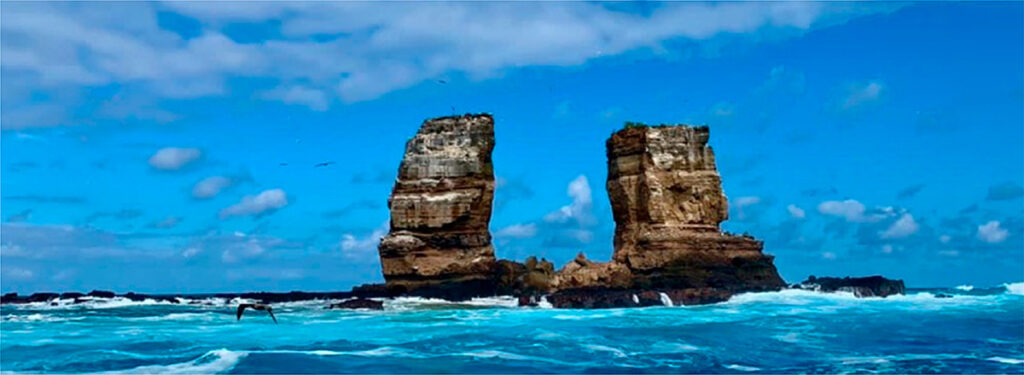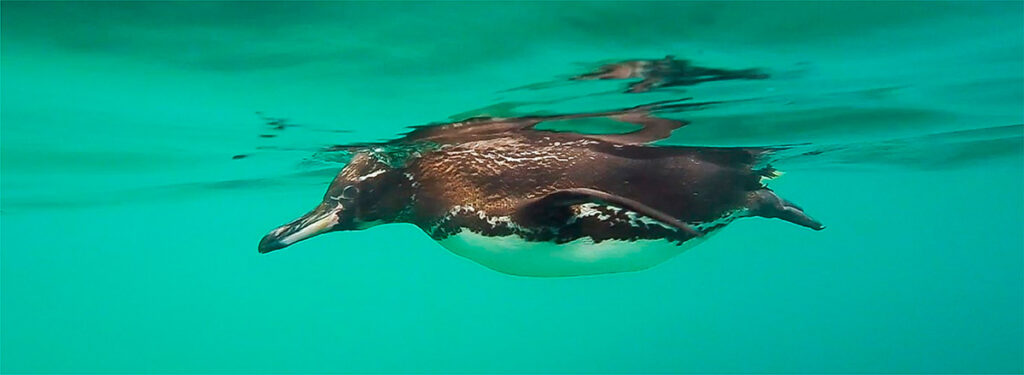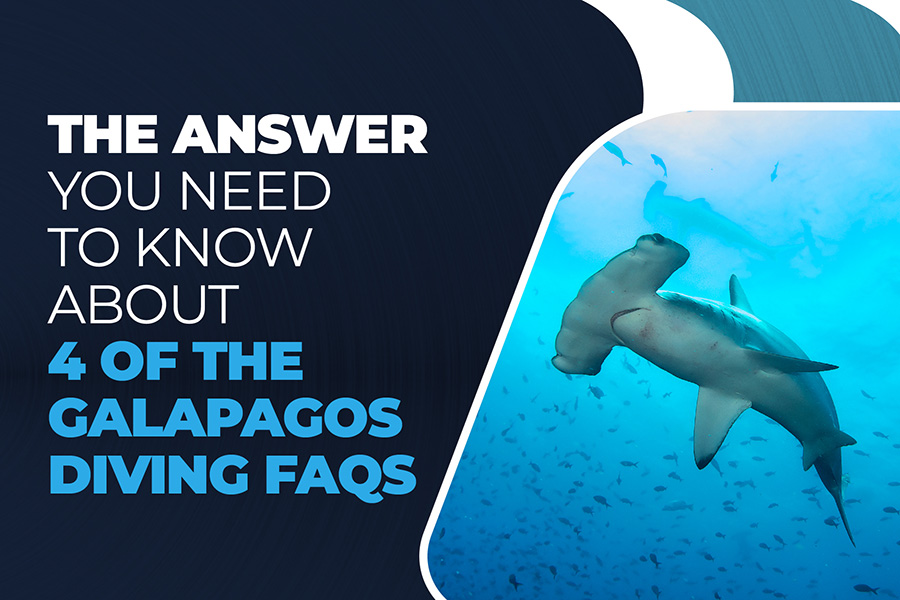Thinking about the Galapagos Islands, the first thing that comes to mind is the rare and unique species that inhabit only there. Besides the land species such as the Galapagos Petrel, the Darwin Finches, or the fearless sea lions, relaxed and unafraid to people, there is an undersea world to discover and live. Global travelers crave and dream about experiencing the Galapagos marine world.
In this opportunity, we decided to let you know the tips and tricks that any travel agent and diver must know in advance to organize a diving trip to the Galapagos Islands.
So, let’s dive into it!

Why dive in the Galapagos Islands?
Can you imagine swimming among dinosaurs? Probably not, but the Galapagos Islands is the only place where a traveler can swim among marine iguanas, which look like miniature dinosaurs. Indeed, this unique iguana species is the only one that feeds underwater from algae and then spends many hours sunbathing to recover its body temperature after swimming in the Galapagos’ cold waters.
But this is only one of the reasons that Galapagos marine life is so coveted among professional divers that dream about experiencing the Darwin and Wolf islands, the pinnacle for divers.

Did you know that in the Galapagos Islands live and mate around 30 types of sharks?
The Galapagos Islands’ location is so privileged by the convergence of different currents that this spot, in the middle of the Pacific Ocean, offers the perfect conditions for feeding and inhabiting some species such as sharks, dolphins, whales, and reef fish, among others.
But how is the diving experience the Galapagos gift to travelers?
Live it in this short video we made for you!
Which are the dive tour options in the Galapagos Islands?
We’re not sure if you know, but we’re here to explain that travelers can experience a liveaboard cruise or one of the daily diving tours available across the three main inhabited islands in the Galapagos archipelago: Santa Cruz, San Cristobal, and Isabela.
Daily tours for divers are ideal for travelers booking a Galapagos Island Hopping tour or for those wanting an extension of their expeditionary cruise by adding a dive experience. However, the diving sites from the previously mentioned islands are in their surrounding islands and islets.
On the other hand, liveaboard offers the best experience a diver can expect in the Galapagos Islands. It’s like being on a safari underwater, where you know that all the species you want to spot are free in their habitat, but you don’t have the certainty of seeing them, and if you do, it’ll be your lucky day.

Which are the diving experiences depending on the type of trip?
As mentioned above, the Galapagos offer two diving tour options: liveaboard cruises and daily dive tours. Depending on the traveler’s choices, the sites and experiences change; but what are the highlights of each one?
Liveaboard diving experiences

Without a doubt, the pinnacle for divers is experiencing the currents and marine life of Darwin and Wolf Islands, so most of the diving sites are located in the northwestern islands of the archipelago.
Because these islands are the Galapagos remotest, liveaboard cruises require around 14 hours of navigation to reach them. Thus, the average cruise journey is seven nights.
Some of the diving sites surrounding Darwin and Wolf are Darwin’s towers, la Ventana islet, shark bay, or “El Derrumbe.”
An essential piece of advice is that liveaboard diving experiences are suitable for advanced divers because of the strong currents in this area among the cold waters. Both factors are the best for being the habitat of silky, hammerhead, and Galapagos sharks, among other species like yellowfin tuna or pelican barracudas.
Daily dive tours

This option is ideal for travelers booking an Island-Hopping tour or for those extending their Galapagos experience after an expeditionary cruise. It also offers different dive sites for different diving experience levels, from beginner to advanced.
The diving sites are located in the three main inhabited islands of the Galapagos (Santa Cruz, San Cristobal, and Isabela), so no matter which of these islands diver is staying on, they will be able to enjoy the undersea life.
In Santa Cruz, the most inhabited island, where the Baltra airport is located, the preferred diving sites are Cousin’s Rock and Gordon Rock. This last one is the most wanted by experienced divers because it has strong currents and an array of species.
In San Cristobal Island, the capital and where the second airport that serves the archipelago is located, some of the best diving sites are Whale Rock, Five Finger, and Kicker Rock, with high probabilities of watching hammerhead and Galapagos sharks, among other species; but, there are other sites for more novel divers.
At Isabela Island, Punta Albemarle, Roca Redonda with its natural gas bubbles, and Cape Marshal are some of the favorite diving sites among divers. Indeed, on this island is where it’s possible to see the only tropical penguin crossing in front of you like a torpedo, as locals call this species for its speed underwater. Also, it’s possible to see Mola Molas on a lucky day.

Can you bring your diving gear to the Galapagos?
This is a general question that divers have. We all know it is better to wear our perfectly fit wetsuit and mask, so the answer to this question is yes. But, our piece of advice is to bring what is essential for being comfortable underwater, considering that your baggage must weigh 23 kg maximum.
So, why not come to the Galapagos with your computer and regulator as well as your wetsuit and relax because liveaboard or diving yachts for day tours offer you the rest of the equipment you may need. Don’t forget to ask in advance what is included and what is available at an additional cost.
Our last tips, but not the least, are:
- Don’t forget to bring your underwater camera; you won’t regret it.
- Book your liveaboard cruise at least six months in advance, better a year or so. Few cruises are authorized for diving activities with limited availability, and they get booked quickly.
- Book your daily tour in advance, too, because the diving tours are based on a weekly schedule and offered by very few diving tour operators, and you don’t want to miss your perfect spot, so secure it in advance.
- If you wonder which is the best time of the year for visiting the Galapagos Islands, we already discussed it in a previous article.
If you want more in-depth information about diving in the Galapagos Islands, we’re here to help you, so don’t hesitate to let us know in the comments. Our diving expert agent based in the US will contact you immediately.


